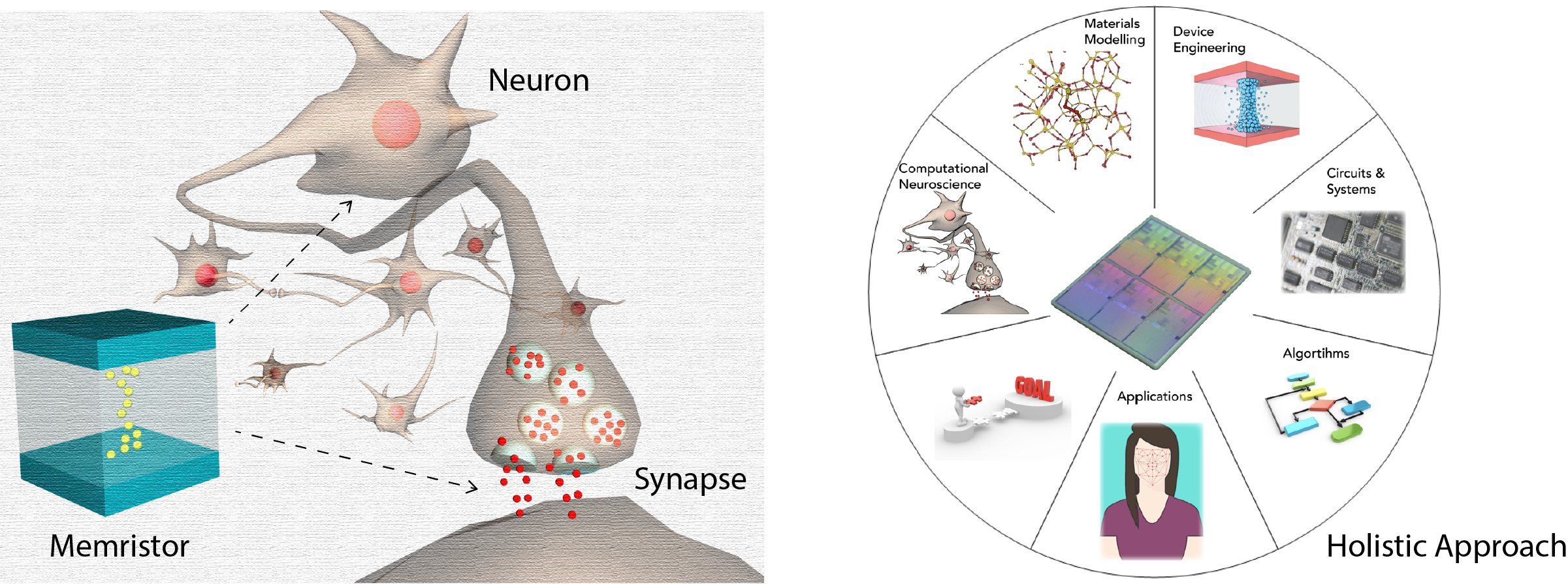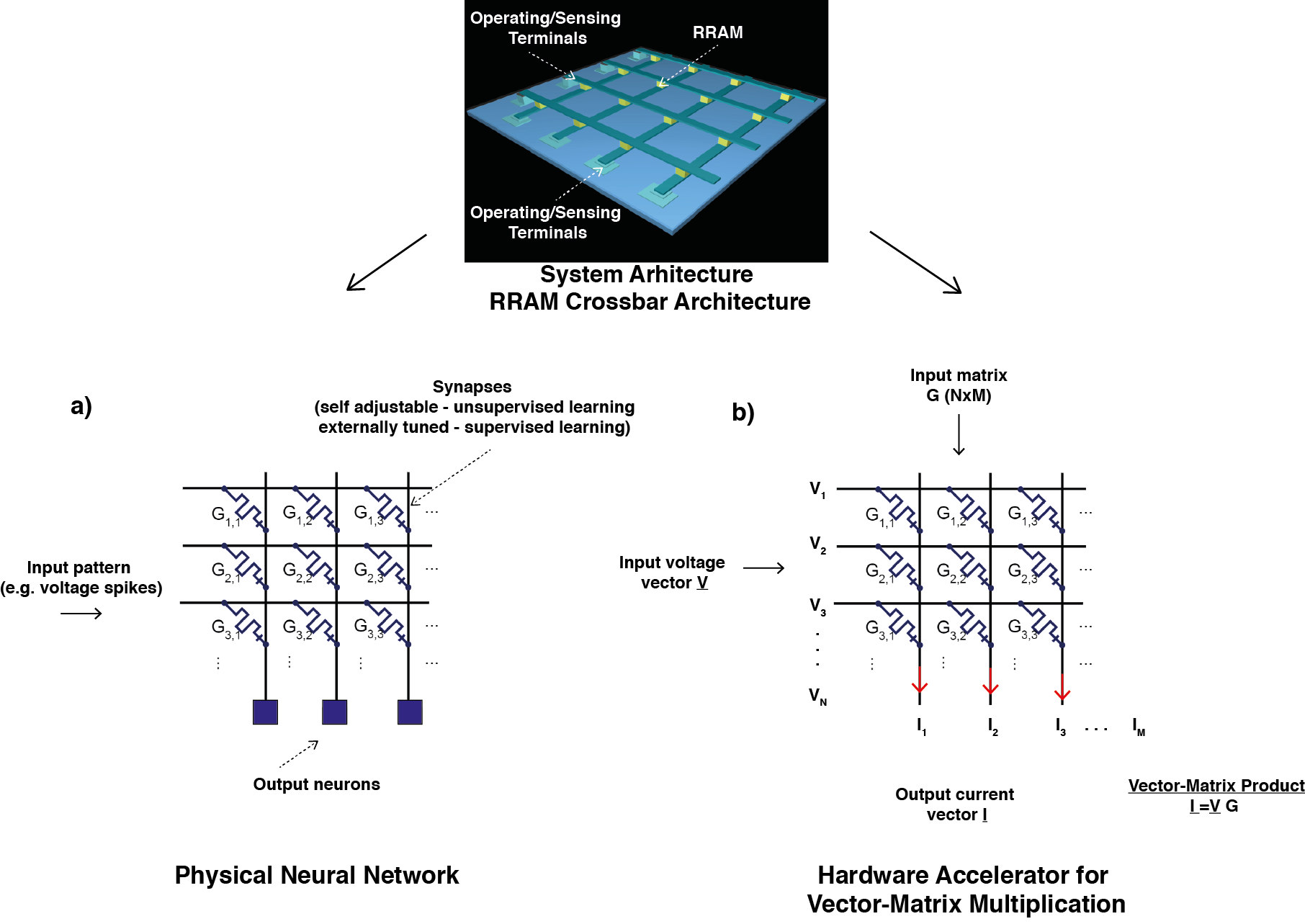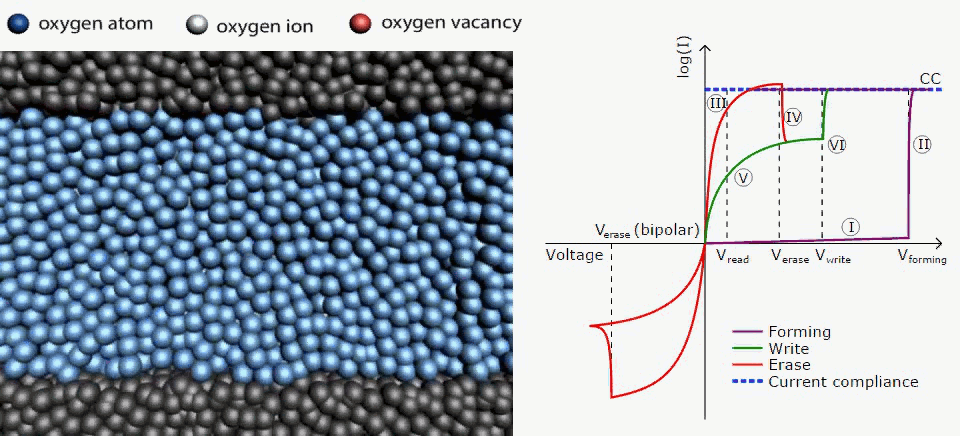RESEARCH
Neuromorphic Memristive Systems

The time is ripe for a fundamental change in how we implement hardware for Machine Learning and Artificial Intelligence applications. We need highly power efficient hardware capable of processing massive datasets in real-time while learning from previous examples. Current hardware solutions, although optimised explicitly for parallel computing, use digital CMOS technology and conventional Von Neumann architecture. Digital components are inherently unsuitable for the realisation of analogue synapses (weights) in artificial neural networks (ANNs), and the sequential nature of Von Neumann architecture is inefficient for vector-matrix multiplications that dominate most ML algorithms.
This project takes a fundamentally different approach to create a new neuromorphic technology. Resistive RAM (RRAM) technology, a subclass of memristive systems, is based on simple two terminals (metal-oxide-metal) nanodevices whose resistance can repeatedly be varied, with low operational energy & very high levels of integration. Apart from memory, memristors also enable computing. This is a crucial step in replacing a von-Neumann's back-and-forth bottleneck by architectures that directly implement neuromorphic functions - most importantly synapse-like plasticity, and neuron-like integration & spiking.
Furthermore, memristive crossbars intrinsically represent physical matrices and have an innate capability to provide approximate vector-matrix multiplication in constant time step. Although still at research stage, this includes speed and power efficiency improvements of many orders of magnitude (>TeraOPS/W) compared to today's state-of-the-art microprocessors. We adopt a holistic and iterative methodology of device design & fabrication, device integration, and optimisation of system architecture and algorithms.
Neuromorphic memristive systems promise to yield vast improvements in power efficiency, therefore, enhancing artificial intelligence in mobile and embedded systems. This can be leveraged in the "Intelligence of things" era with ML algorithms implemented directly on the board, facilitating efficient local data processing and enabling devices to make decisions locally, rather than to rely on data streaming and latency-prone cloud computing.

Simplified picture of resistance switching in oxide-based RRAM devices

For more details check: A. Mehonic and A.J. Kenyon, "Resistive switching in oxides", in Defects at Oxide Surfaces, eds J. Jupille and G. Thornton (Basel: Springer International Publishing), 401-428. doi: 10.1007/978-3-319-14367-5_13